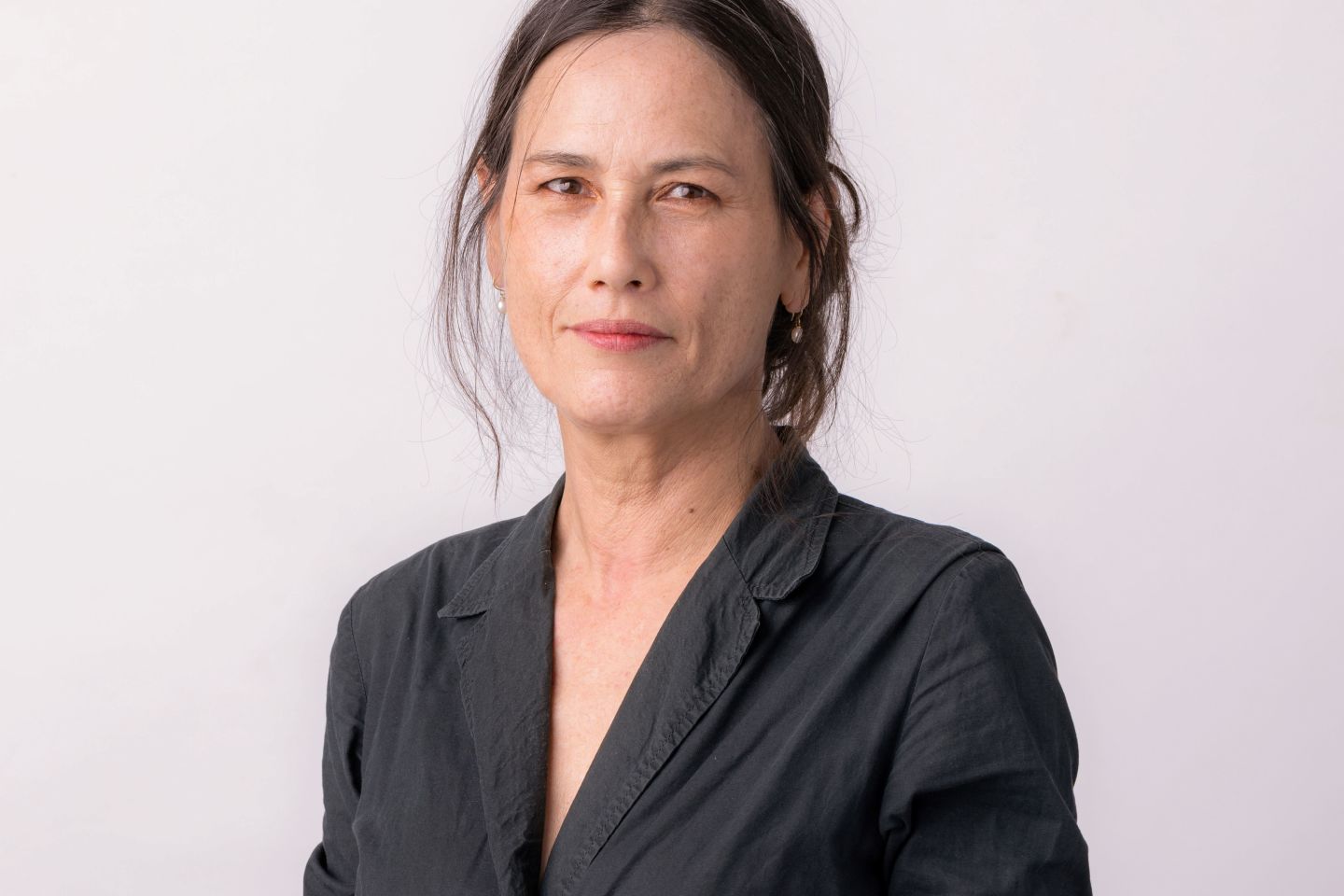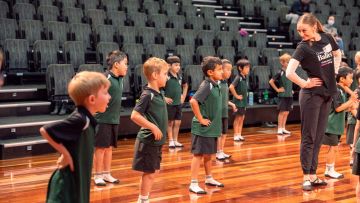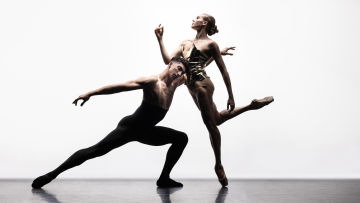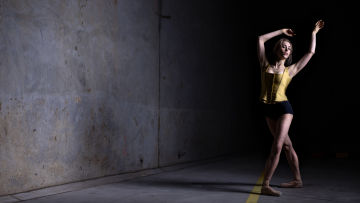Q&A with Academy Costume Manager and Associate Designer, Kathryn Lee
Written by Cassandra Houghton

From sparkling tutus that catch the light - reflecting a cascade of colour, to skilfully crafted trousers that shimmer with movement, most of the costumes in Queensland Ballet Academy’s performances are designed inhouse by Academy Costume Manager and Associate Designer Kathryn Lee. An expert in the field who once costumed the famous Myer Christmas window displays in Brisbane City, we sat down with Kat to talk silhouettes, fabric, and inspiration in the lead up to the new season of Soirée.
Tell us about your design background and what led you to Queensland Ballet.
In my last year at RMIT studying Fashion in the 1980s, I started working as a Costume Illustrator for an Architect who was the South Australian Theatre Company’s Resident Designer at the time. To be a busy freelancer, you have to have a broad approach and keep your mind’s eye open to opportunities! From there, I fabricated inanimate objects like the fibreglass figurines at EXPO and fabric instillations at nightclubs, and animated objects like the Myer Christmas window displays.
For nearly 20 years, I worked on a show-by-show basis making costumes for films, mini-series, street and circus performers, and later, opera singers, stage actors and dancers. Once my second child was enrolled at school, I resumed working full-time, becoming the Principal Patternmaker at Opera Queensland for a few years, before moving to Queensland Theatre Company in a similar role. Then about 10 years ago Noelene Hill (Queensland Ballet Resident Designer and Costume Archivist), knowing my vast repertoire of skills, asked me to coordinate costumes for some Queensland Ballet Academy shows.
What does a typical day look like to you?
It varies, it’s never the same. Today I had a meeting with a choreographer locking in a cast for his work in Soirée, so I can purchase the costumes I found. I’m also in the process of liaising with a tailor for another Soirée piece. Most of this season’s costumes are purchases that we will tweak for a better fit, altered so the dancers can do grand plies in them, or totally deconstructing them so they can be reconstructed to design. Presently, I’m sourcing and purchasing pieces for the millinery items and neck piece we are making.
I’m also bumping out our last show – the Academy Gala. After cleaning the costumes, hats and earrings, they need to be stored carefully.
How do you approach each Academy season, from design to creation?
I have many different hats – in this role I not only design, but also make the patterns, cut the fabric and usually sew at least the sample piece. Early in each year, I take about 50 measurements per Academy student, along with photos, so when it comes to allocating costumes, I can give them the best fit, together with flattering colours, silhouettes and support. I do fittings and oversee alterations, organise the shows’ maintenance and laundry, bump-ins and outs, dressings, as well acting as a stage stand-by, catching any wardrobe malfunctions before they happen.
What is something challenging about designing costumes for stage that audiences may not realise?
Every performer has different needs. Where opera singers like their diaphragm to be in corsets to help them be aware of their breathing, stage actors assume their role with the help of a costume that defines their character and individuality. When it comes to dancers, the ability to move freely is paramount. And visually, there needs to be a thread of consistency unifying the corps so that only the principal dancers’ costumes draw focus.
Favourite thing about your job?
I have two: the first is the variation – no two days, costumes, choreographies nor seasons are the same. The second is bearing witness to the growth of these dancers not only artistically and technically, but as young adults who will forever have steely determination and self-discipline under the veil of elegance and immaculate manners.
Where do you get your inspiration from – how much collaboration goes into each design?
It’s always a collaborative process. As I do so many other roles, I rarely get an opportunity to watch the progress of a dance piece develop so I rely on the choreographers to share their vision – the story, movements, theme or inspiration point. This brief guides me to interpret, envision, and develop my own source code.
How far in advance do you begin working on a season?
I’ve had up to eight months to turn an idea over in my brain and bring it to fruition, whilst working on other shows. I tend to direct all my focus, attention and energy show by show, task by task. I don’t like having half-completed jobs lingering in the background – it’s all or nothing. Most of the time, execution is constrained by knowledge of the cast which dictates measurements for patterns and allocations.
Do the costumes get reused for other Academy productions?
Absolutely. When I design and make costumes, I’m always thinking longevity, versatility and ability to be reused. Whether it’s bodices or trousers, they are drafted with the maximum seam allowance they can tolerate. The more we reuse Queensland Ballet and Academy costumes, the more cost-effective they are. In life or work, I don’t believe in locking away jewellery or only displaying the beautiful porcelain dinnerplates and crystal goblets. I believe in others enjoying the pleasure and experience of seeing and experiencing them.
Favourite costume you have created over the years?
Probably the Evening Embers costumes for the 2022 season of Summer Soirée. Hand-dyed with a simple ‘A-line’ silhouette – Paul Boyd’s choreography beautifully and effectively maximised their full potential.
See Kathryn’s creations in the upcoming Soirée, from 19-21 October at the Talbot Theatre.
#Related

Media - Press Releases
Queensland Ballet Education Programs 2026 Learning through Dance

Media - Articles
2025 Wrap Up

Media - Press Releases
